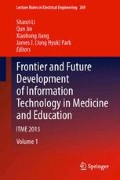Abstract
Objective Combined with neonatal hypoxic-ischemic encephalopathy (HIE) lesions’ images in DWI, the ADC value, serum GGT, and the TBil content to provide the basis for the early diagnosis and treatment of HIE. Materials and Methods To detect serum GGT and TBil of 27 cases of HIE patients who were born in 24–48 h and adept MRI examination in one week, and measure the ADC value of the lesion. 30 healthy newborns were chosen randomly as control group. Result (1) Lesions’ ADC value in neonatal HIE patients was significantly lower than that in normal neonatal (P < 0.05). There are no difference between mild and moderate HIE patient’s ADC value (P > 0.05). ADC value of the severe lesions was lower than that in mild and moderate patients (P < 0.05). (2) Serum GGT values of severe HIE patients were higher than those of mild and moderate patients. NSE of moderate HIE patients was higher than that of mild patients (P < 0.05). Serum TBil of severe HIE were lower than that of mild and moderate patients (P < 0.05). Serum TBil of moderate HIE were lower than that of mild patients (P < 0.05). (3) the severe HIE patients’ DWI images with high signal lesions were more than in mild and moderate patients, moderate HIE patients’ DWI images with high signal lesions were more than mild patients (P < 0.05). Conclusion we can combine HIE patients’ DWI images, lesion’s ADC values and serum GGT, TBil level to use for early diagnosis of neonatal hypoxic-ischemic encephalopathy.
Access this chapter
Tax calculation will be finalised at checkout
Purchases are for personal use only
References
Barkovich AJ, Westmark K, Partidge C et al (1995) Perinatal asphyxia: MR findings in the first 10 days. AJNR 16:427–438
Dag Y, Firat AK, Karakas HM et al (2006) Clinical outcomes of neonatal hypoxic ischemic encephalopathy evaluated with diffusion-weighted magnetic resonance imaging. Diagn Interv Radiol 12:109–114
Forbes KP, Pipe JG, Bird R et al (2000) Neonatal hypoxic-ischemic encephalopathy: detection with diffusion-weighted MR imaging. AJNR 21:1490–1496
Hu L, Lin Z, Lin N et al (2005) Clinical analysis of neonatal hypoxic-ischemic encephalopathy with multiple organ damage. J Clin Res 22:26–29
Mao J (2003) Serum bilirubin changes and significance of neonatal hypoxic-ischemic encephalopathy. Mod Tradit Chin Med 12:362–363
McKinstry RC, Miller JH, Snyder AZ et al (2002) A prospective, longitudinal diffusion tensor imaging study of brain injury in newborns. Neurology 59:824–833
Takeda K, Nomura Y, Sakuma H et al (1997) MR assessment of normal brain development in neonates and infants: comparative study of T1 and diffusion-weighted images. J Comput Assist Tomogr 21:1–7
Trange EL, Saeed N, Cowan FM et al (2004) MR imaging quantification of cerebellar growth following hypoxicischemic injury to the neonatal brain. AJNR 25:463–468
Wang H et al (2008) HIE patients’ mechanism of brain edema and its correlation between DWI, DTI characteristics and AQP-4. Chin Med Imaging Technol 24:622–625
Acknowledgments
This study was supported by Research Weifang science and technology project (20111142,201104091); Shandong provincial natural science foundation of china (ZR2010HM078).
Author information
Authors and Affiliations
Corresponding author
Editor information
Editors and Affiliations
Rights and permissions
Copyright information
© 2014 Springer Science+Business Media Dordrecht
About this paper
Cite this paper
Guan, Y., Yan, A., Ge, Y., Xu, Y., Sun, X., Dong, P. (2014). Relating Research on ADC Value and Serum GGT, TBil of Lesions in Neonatal Hypoxic Ischemic Encephalopathy. In: Li, S., Jin, Q., Jiang, X., Park, J. (eds) Frontier and Future Development of Information Technology in Medicine and Education. Lecture Notes in Electrical Engineering, vol 269. Springer, Dordrecht. https://doi.org/10.1007/978-94-007-7618-0_63
Download citation
DOI: https://doi.org/10.1007/978-94-007-7618-0_63
Published:
Publisher Name: Springer, Dordrecht
Print ISBN: 978-94-007-7617-3
Online ISBN: 978-94-007-7618-0
eBook Packages: EngineeringEngineering (R0)

